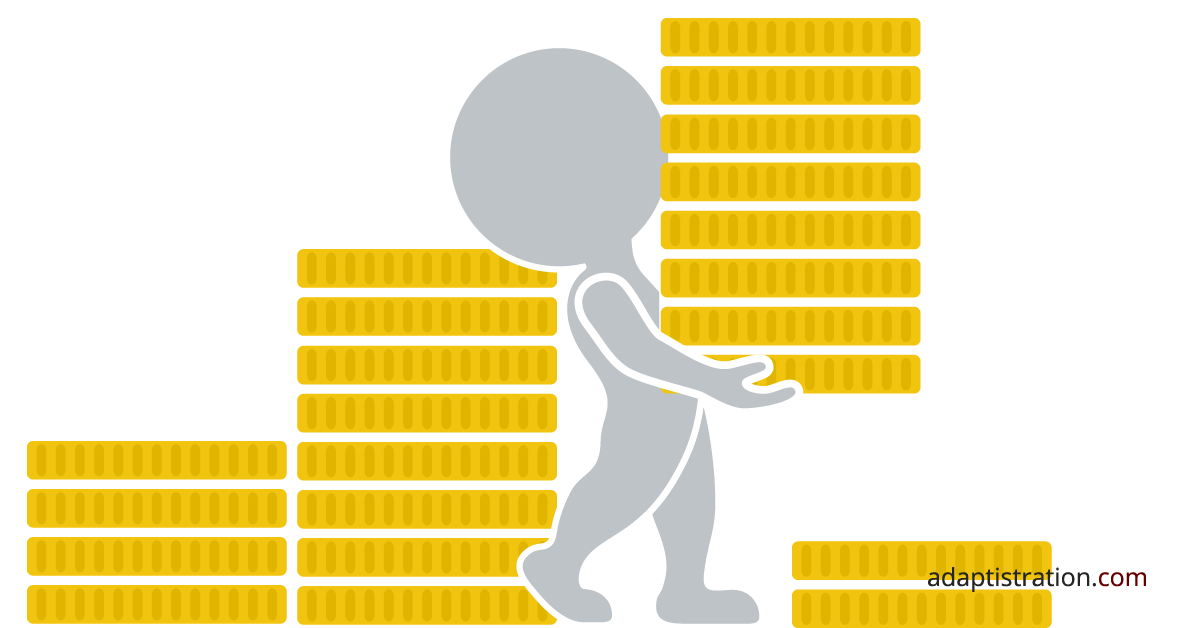As promised, it’s time to take a deep dive into what Google Analytics tells us about the last year. In addition to the 2021 review, I’ve included notes and commentary connected to 2020 data in italics.
Audience
- Number of pages per session went up by 3.73 percent.
- Overall traffic decreased 7.88 percent. What’s interesting here is there was a clear slide about six weeks after 2020’s pandemic driven layoffs and furloughs started hitting hardest. After plateauing, it bounced back in the beginning of 2021 but still ended at the cumulative decrease.
- Readers by age groups: younger readers dominated the age groups and 18–24-year-olds seeing their single largest increase since I started using Google Analytics.
- 18-24: 25.35 percent of readers (+5)
- 25-34: 25.2 percent of readers (-3)
- 35-44: 14.84 percent of readers (-0.1)
- 45-54: 12.84 percent of readers (+0.5)
- 55-64: 10.84 percent of readers (-1)
- 65+: 10.94 percent of readers (-1)
- The division between male and female readers continues to creep closer: men comprised 52.01 percent of readers while women comprised 47.99 percent. Over the pervious period where the pandemic was really kicking in, Female readers edged out Male for the first time (50.05% to 49.95%) but slid back to the small historic gap over 2021.
- The largest age group of female readers were the 18-24 (13.36%) and 25-34 (12.32%) groups.
- For male readers, the top age groups were reversed: 25-34 (12.95%) followed by 18-24 (11.93%).
- Readers by state: CA and TX both saw big increases over both 2020 and 2021 while the remaining three all decreased.
- California: 11.98 percent of readers
- New York: 7.57 percent of readers
- Texas: 7.12 percent of readers
- Illinois: 5.03 percent of readers
- Florida: 4.28 percent of readers
- Browser & OS:
- Chrome was still the most common browser but slipped a bit in overall usage: 47.93 percent of visitors used Chrome (all versions, desktop and mobile).
- Safari (all versions) remained in the #2 slot and increased its share of overall browser share: 40.17 percent of visitors.
- Firefox continued to slide to a point of becoming an afterthought with 3.10 percent.
- MS Edge, while still a tiny fraction, saw the largest increase across all browsers and is up to 2.57 percent.
- Android managed to secure full percentage point values with all versions of the browser reaching 4.5 percent. The ratio really started climbing toward the end of 2020.
- Device Overview:
- Smartphone: up to 55.94 percent (+4).
- Desktop users: fell a bit to 41.16 percent (-1).
- Tablet: lost even more ground and is down to 2.90 percent (-3).
- Cross Device: designed to track users as they visit your site across a single session, but multiple devices, users spent less time bouncing between devices. This makes complete sense given the increase in remote working and layoffs/furloughs.
- The average Adaptistration reader is a morning person, the most popular days and times to access the site include:
- Fridays from 6am to 10am ET.
- Tuesdays from 5am to 7am ET.
- Over the pandemic, readers started visiting the site at a larger swath of times across each weekday and weekend reading dropped by nearly 50 percent!
Acquisition
- Social media continued rebounded a bit to comprise 14.7 percent of the way users found their way to content.
- Direct acquisition traffic increased considerably: 27.6 percent (+10!).
- Organic search continued to be the dominant method with 52.9 percent.
- Acquisition via emails improved a bit from last year.
- Referral based traffic, links from other sites, increased to 4.7 percent (+1).
Social Platform Breakdown
- Facebook continues to be the social media platform of choice among users who arrive at Adaptistration’s. It comprised 73.14 of incoming traffic from social media but that number is down eight points from the previous year. The rate of decrease increased over the course of the pandemic to the point where it leveled off in mid-2020.
- Twitter juice thickened up a bit to 13.88 percent (+3).
- LinkedIn continues to increase at the fastest pace and is now only a few points behind Twitter at 10.84 percent (+3.5).
- Quora moved from fraction of a percent to 1.39 percent (+0.9).
Referrals
- Not counting social media platforms, the most popular referral sites included com, which sent nearly 2x the amount of traffic over 2020, The New York Times, m-festival.biz (a Japanese classical music site), theviolinchannel.com, vulture.com, and InsideTheArts.com. For the first time in several years, Musical America didn’t even rank in the top 25 referrers. At the onset of the pandemic, it was still in the Top 15 but dropped sharply by summer 2020 and never recovered.
- The weekly email summaries continue to be the most popular form of email campaign.
Content
Top 15 Articles
- 2021 Orchestra Compensation Reports: Music Directors
- 2019 Orchestra Compensation Reports: Music Directors
- Met Announces Acquisition Deal With Disney (I always love to see the April Fools post make it into the Top 10)
- 2019 Orchestra Compensation Reports: Concertmasters
- Another New SBA Funding Program You Should Be Aware Of (With A Bonus Resource Hidden Gem)
- Performing Arts Org Vax Policy Database
- 2021 Orchestra Compensation Reports: Executives
- 2021 Orchestra Compensation Reports: Concertmasters
- The Orchestra Compensation Reports (Archive Page)
- What Happens When A Contract Expires? This article started drawing traffic in large numbers following the Colorado Springs Philharmonic labor dispute.
- Orchestra Financial Reports
- The Composer Diversity Database
- The Latest Waypoint In The Met’s Ugly Labor War
- Orchestra Governance Essays It’s always heartening to see static resources like this generate so much routine traffic.
- Juilliard Students to Admin: We’re Not Gonna Take It
It’s worth pointing out that while 2020 saw similar interest in the annual compensation report articles, the COVID-19 State Of Employment series dominated traffic from April 2020 – September 2020 with the final report article garnering the most traffic.
Gratitude
As always, the blog is only worth the value you assign and these efforts are for naught without engaged and passionate readers so THANK YOU for not only visiting, but finding the content and ideas valuable enough to share with colleagues and friends.


